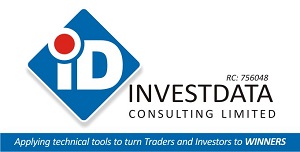The global financial system will remain vulnerable to human exuberance, a challenge in behavioural finance that seems to be a natural part of investing. It is this phenomenon that underpins many of the regulations and risk management practices in the world of asset management. Interestingly, risk and return are positively correlated, little wonder the appetite for higher yield tends to exacerbate behavioural tendencies in investment decisions, as portfolio managers may stretch the scope of investment policies to attain higher return, even whilst recognizing the increased risk associated with such investment.
Thus, regulators in Nigeria, like their peers elsewhere in the world, have strictly codified rules guiding the investment practice of different sub-sectors in the financial system. They range from Nigeria’s Securities and Exchange Commission (SEC), the National Pension Commission (Pencom), the Central Bank of Nigeria (CBN), as well as the Nigerian Insurance Commission (NAICOM), and all have guidelines for investments. These include, but are not limited to a specific definition of qualified investments and asset allocation practices, in addition to permissible performance reporting and disclosure formats.
Beyond the investment decision and management practice, performance reporting is increasingly becoming regulated for effective standardization and benchmarking analysis.
It is on this note that Nigerian pension fund managers and traditional asset management firms would have to contend with the emerging challenges of IFRS 9, the proactive accounting standards on measurements and disclosure of Financial Instruments, which replaces IAS 39. The new standard is anchored on an expected loss model, a proactive measure towards early recognition and provisioning for financial instruments, compared to hitherto IAS 39, which is based on an incurred loss model, an after-the-fact approach to risk management.
Just like Nigerian banks, pension fund managers have transited from IAS 39 to IFRS 9 as at the effective date of 01 January 2018, thereby reinforcing the need for pension fund managers to re-align investment decisions to these new performance and reporting standards.
What Is The Exposure?
With an average of 90% of pension funds invested into fixed income instruments, ranging from money market placements, treasury bills, commercial papers and bonds – sovereign, sub-national and corporates, the key source of credit risk exposure for pension funds is the risk that any of the counterparties or issuers of the financial instruments will default, either in interest payment or principal repayment. Whilst Pencom has proactively mitigated credit risk exposures by limiting investable assets to those with a minimum of “BBB” credit ratings, pension fund managers may need to set internal benchmarks and asset allocations thresholds for investments below “AAA,” which are presumed to be “risk-free,” given the “sanctity” of the issuers of such instruments, designated as “AAA” instruments – mostly sovereign.
…Are The Mitigants Enough?
Notwithstanding the proactive guidelines by the Pension Commission, the rationale for fund managers to limit exposure to lower-rated bonds and borderline investment grade assets (“BBB”) is reinforced by the relatively higher impairment charge that may be required on such assets with relatively weak credit rating, compared to more quality assets. Expectedly, all non-sovereign instruments, will be expected to attract impairment charges, irrespective of performance, even so the required impairment charge may be immaterial, particularly as there are theoretically inherent risks and higher “probability of default” for lower-rated corporate bonds in the Nigerian capital market, like anywhere in the world. Hence, the impairment charge that would be expected on lower rated bonds would be higher, compared to the higher rated bonds, even when both are established to be duly performing.
According to Deloitte, as a practical expedient, IFRS 9 allows an entity to assume that the credit risk on a financial instrument has not increased significantly if it is determined to have a ‘low’ credit risk at the reporting date. Interestingly, the International Financial Reporting Standards considers credit risk to be ‘low’ if there is a low risk of default and thus suggests that an ‘investment grade’ rating might be an indicator for low credit risk.
Besides the higher probability of default on a lower rated instrument and the corresponding higher impairment charge that may be required on such exposure, the downgrade risk is empirically higher for instruments lower down the rating scale below the “A” rating. This, therefore, suggests a higher probability of a significant increase in credit risk over the life of the instrument and the potential for a reclassification of the assets from “Stage 1” bucket into “Stage 2”, irrespective of the performance of such debt instrument. For instance, if macroeconomic volatility or industry-specific challenge leads to the rating downgrade of a borderline “BBB” rated instrument, it will become a non-investment grade asset, thus requiring fund managers to divest the asset. Such development may lead to significant price and liquidity risks, as all pension fund managers holding the instrument would seek to exit in compliance with regulatory guidelines, irrespective of the performance of the asset.
An example in India is that currently, though corporate bonds rated ‘BBB’ or equivalent are considered investment grade, most regulators in India have set a minimum of ‘AA’ rating for bonds to be eligible for investment. Therefore, the Indian corporate bond market is currently skewed towards high-rated debt instruments (AA and AAA).
In Nigeria, a total of N411billion outstanding corporate bonds are listed on the FMDQ platform, out of which N176 billion or 43% are “BBB” rated.
Interestingly, N44bn of the corporate bonds are “AAA” rated, ranking pari-pasu with the FGN Securities, which are backed by the full faith and credit of the Federal Government of Nigeria.
The “AAA” rating assigned on the bonds of these corporate bonds: Mixta, NMRC, Viathan, and North-South Power, are reflective of the respective guarantee s on the bonds by reputable “AAA” rated institutions. Whilst Mixta and NMRC were backed by Guarantco and the Federal Government of Nigeria respectively; Viathan and North-South Power were guaranteed by InfraCredit, a specialized infrastructure guarantee company, backed by the NSIA, Africa Finance Corporation, and GuarantCo.
Notably, the Guarantee from these reputable institutions, are pseudo Sovereign credit enhancements and significantly mitigates the credit risk exposures on the bonds, backed by the institutions, which become the ultimate obligor to the bond holders, as the guarantors would fulfill the obligations, in the unexpected incidence of a default from the primary issuer/obligor.
In between the “AAA” and “BBB” rated issues are the bonds of highly rated banks like United Bank for Africa and Stanbic IBTC as well as non-financial institutions like Lafarge and Dufil Prima, which are assigned credit ratings within the “A” and “AA” categories.
Under the IFRS 9 dispensation, effective pricing of a Non-Sovereign instrument may become more pertinent than ever, as fund managers seek adequate credit spread to compensate for inherent differences in credit quality, as may be reflected in the credit rating differentials. Whilst the credit spread has been somewhat standardized in more developed markets, the Nigerian capital market is still evolving, with no defined pricing mechanism for credit spread.
Given the realities of IFRS 9, the perceived pricing inefficiency in the market will be gradually corrected, as we expect fund managers, banks, insurance, and other investor categories to increasingly price-in credit risks in new issues in the Nigerian capital market. Interestingly, the increasing depth of credit rating in Nigeria should support the pricing evolution, as credit ratings are a product of rigorous analysis done by the rating agencies in differentiating obligors and issues, with the Sovereign serving as the benchmark.








